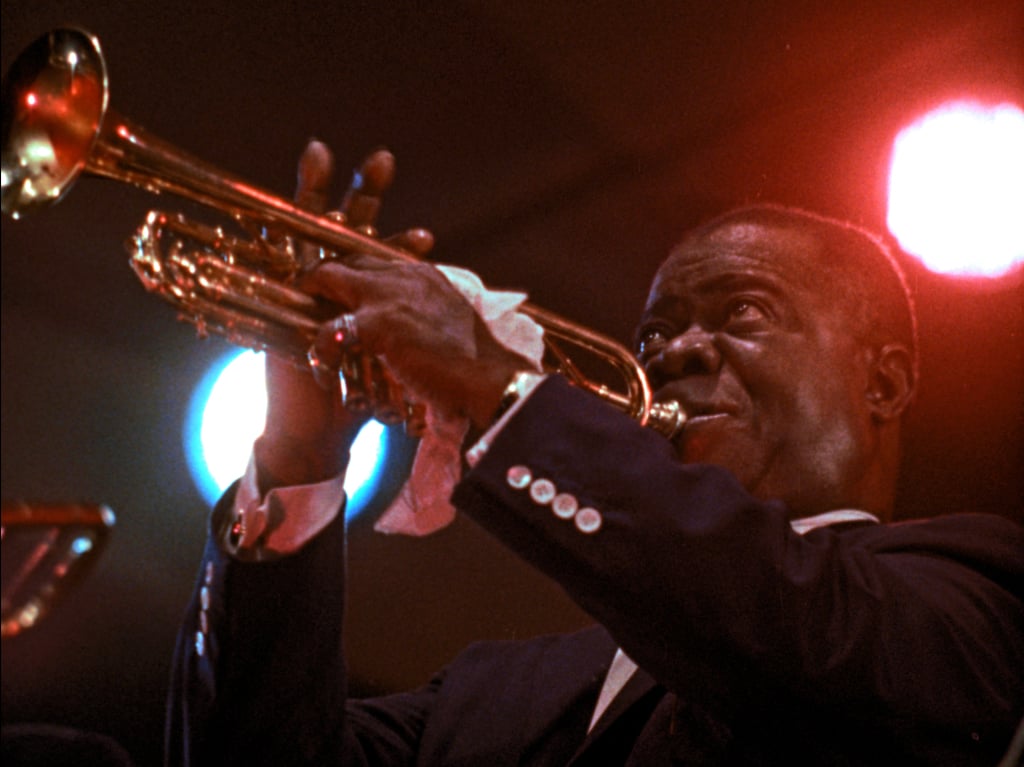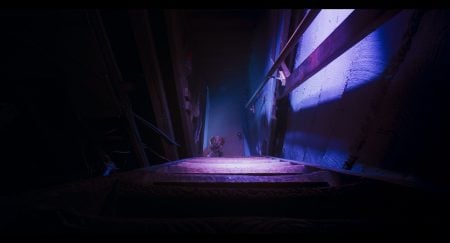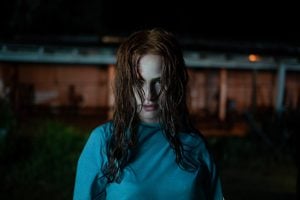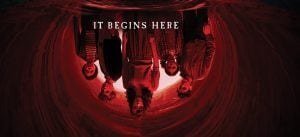Some films are not only meant to capture a specific event, but more importantly where the culture was at the time of said event. This is true of Bert Stern and Aram Avakian’s landmark 1959 documentary Jazz On A Summer’s Day. While one may think this is simply a documentation of the 1958 Newport Jazz Festival, the first-time filmmakers take an approach – intentional or not – that takes a look beyond the musicians to the event as a whole. Up until this point in history, jazz was more so known as a dark, hidden part of music that was only appreciated by the most daring of individuals. Thanks to the Newport Jazz Festival, the genre was catapulted into the mainstream alongside the suburban Rhode Island lifestyle. Whether you appreciate what this film has to offer will greatly depend on what you expect from it on the onset. There are some supremely talented individuals who lend their talents to the feature, but you will find these filmmakers are just as interested in what is happening around them as what is happening on stage. Conflicting emotions are bound to arise from fans of these artists.
The musical journey commences with a static performance from the Jimmy Giuffre Trio (featuring the saxophonist Giuffre with the valve-trombonist Bob Brookmeyer and the guitarist Jim Hall), who deliver a capable tune without much dramatic help from the camera. The movie is not pulling out the big guns right from the jump, but you will soon see that due to contracts many of the big names who were at the festival such as Miles Davis, Duke Ellington and more are not featured at all. Yet you cannot complain too much when Thelonious Monk shows up for a quiet, powerful performance of “Blue Monk” that serves as one of the strong points of the feature. This is also where you start to see some of the artistic indulgences as the filmmakers cut away from Monk in favor of following the America’s Cup sailboat races complete with announcer over Monk’s music. Any fan of jazz would view this as an almost sacrilegious experience. There are very few chances when legendary performers of this era were able to be captured so powerfully in their element, and these filmmakers do not seem interested in showing them.

This is a recurring theme throughout the film, and it feels like one that disproportionately affects the artists of color in the film, which is doubly a shame since arguably they are among the more talented in the lineup. No one is truly spared, though, as Anita O’Day delivers a rousing double dose of “Sweet Georgia Brown” and “Tea for Two” while the camera often scans the docile crowd and eventually fixates on a woman chowing down on a hotdog – who can blame her? There are times where the supplemental outside material works quite well, such as a waiter trying to serve beers or drunken revelry at a house party. Other moments just seem like the victim of a filmmaker out of their depth, such as when the camera fixates on a woman immersed in a good book, which was really only included because that woman was the girlfriend of the director at the time. There is at least one truly beautiful moment outside of the proper festival where Chico Hamilton’s cellist Nathan Gershman plays a Bach suite that will stir even the most hardened souls.
When the film gives you what you really want, it makes for a very memorable experience. Louis Armstrong gets to shine both with his instrument and on the microphone as he jokes around with the audience as if he had a second calling as a comedian. You feel it in your bones when he lets loose on “Up a Lazy River” and “Tiger Rag,” and closing out with “Saints” will have you feeling pretty grand. It is our closer Mahalia Jackson that takes you to church with her after-midnight performance that leaves behind the secular acts in the dust. The power she injects into “The Lord’s Prayer” is undeniable and deeply moving. Hers is one of the performances where you most feel the connection between performer and audience in a satisfying way. The filmmaking may not always be beneficial to the sublime performances, but the filmmakers attempt to provide something beyond a simple concert film – an admirable effort even if they do not always succeed. The portrait on display here feels heavily favored to the white man’s experience of jazz when the film could have used a more well-rounded approach.

Video Quality
The Blu-Ray of Jazz On A Summer’s Day is presented in 1.34:1 and is sourced from a new 4K master of a mixture of the original camera negative and the original interpositive. This is a very nice looking transfer that eliminates a large portion of the print damage outside of the occasional white specks, tiny cuts and other small blemishes. It is nice to report that the transfer maintains good film grain support throughout with nothing looking unnatural. When you consider the age of the film and likely condition of the source material, it is pleasing to see the material looking so strong. There does not appear to be any issues with compression artifacts or any other such digital anomalies. The track does show off some fine detail in the clothing of the subjects and in some of the background elements in nature. Colors present with an impressive vividness that pops off the screen. This presentation does a nice job of giving new life to this classic slice of music history.
Audio Quality
The new Blu-Ray is presented with a lossless DTS-HD 2.0 Master Audio track that suits the material quite well. The music is the main focus of this feature, and it mostly holds up quite well considering the volatile nature of capturing live recordings, especially during this era. Some of the lyrics are a bit muddled due to some of the limitations of the instruments and equipment used at the time. The dialogue is as clear and consistent as it can be, but there are minor sound issues due to the source material and how the documentary was captured. The most important thing is that the track remains faithful to the intention of the creative team. English subtitles are provided for those who desire them. The film sounds as good as could be expected on Blu-Ray.
Special Features
The Blu-Ray of Jazz On A Summer’s Day includes a booklet featuring the essay “Festival of Lights: Jazz On A Summer’s Day” by author Nate Chinen which explores some of the behind the scenes elements of the production. This provides a great amount of context and insight into the film’s production that is so worthwhile. The on-disc special features are as follows:
- Archival Interview with Bert Stern: A three-minute interview with co-director Bert Stern in which he briefly discusses the film and how it impacted some of the people around him.
- Bert Stern – Original Madman: An excellent 89-minute documentary produced by Shannah Laumeister Stern in 2011 is provided on this disc. Through the film you gain greater insight into the life and career of the legendary photographer and co-director of Jazz On A Summer’s Day. The imprint he had within the cultural landscape outside of this film is astounding.
- Photos of Louis Armstrong: A slideshow of the legendary musician from Bert Stern.
- Contact Sheets of Photos: Another slideshow of various artists from Bert Stern.
- Trailer: A minute-long trailer for Jazz On A Summer’s Day is provided here.
Final Thoughts
Jazz On A Summer’s Day is a documentary that captures an era of music that is rich with fascinating history, but the presentation will feel a bit lacking to the most ardent fans of the genre. There are some truly unbelievable performances from the subjects that should not be missed. The filmmaking just feels a bit lacking compared to what could have been featured on screen. From one moment to the next, I change my mind over whether or not this is a movie I should recommend to people, as it is almost split evenly down the middle with good and bad qualities. Kino Lorber has released a Blu-Ray with a really strong A/V presentation and an excellent assortment of special features. Since there is more good to this disc than bad, I will recommend it but fans should know this is not a straightforward concert performance showcase going in. Recommended
Jazz On A Summer’s Day is currently available to purchase on Blu-Ray, DVD and Digital.
Note: Images presented in this review are not reflective of the image quality of the Blu-Ray.
Disclaimer: Kino Lorber has supplied a copy of this disc free of charge for review purposes. All opinions in this review are the honest reactions of the author.

Dillon is most comfortable sitting around in a theatre all day watching both big budget and independent movies.




![‘Anemone’ Review – Ronan Day-Lewis’ Debut Feature Is A Bold Visual Feast Anchored By Daniel Day-Lewis’ Tremendous Return [NYFF 2025] ‘Anemone’ Review – Ronan Day-Lewis’ Debut Feature Is A Bold Visual Feast Anchored By Daniel Day-Lewis’ Tremendous Return [NYFF 2025]](https://cdn.geekvibesnation.com/wp-media-folder-geek-vibes-nation/wp-content/uploads/2025/09/Anemone-Still-300x126.jpg)

